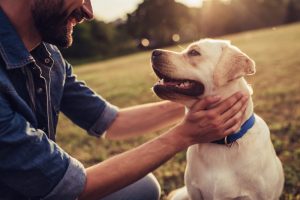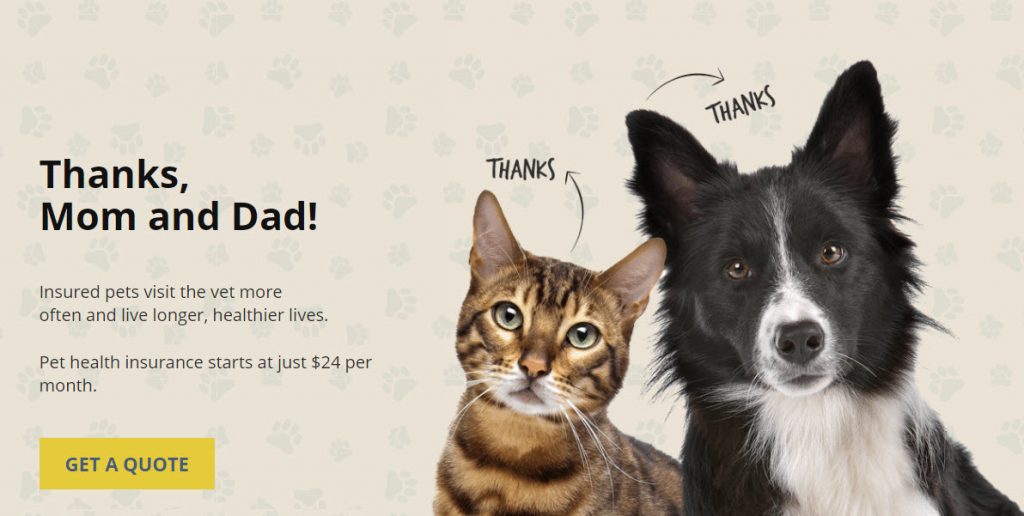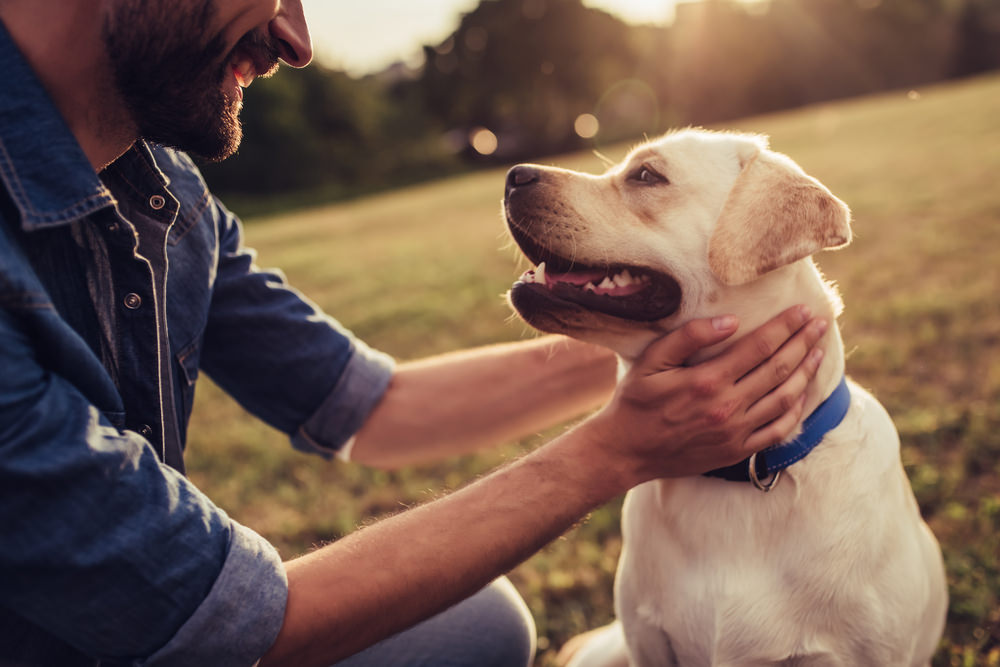Intervertebral Disc Disease In Dogs
Free Pet Insurance Comparison
Compare Quotes From Top Companies and Save
Secured with SHA-256 Encryption
Dr. Pippa Elliott BVMS, MRCVS
Veterinarian
Dr Pippa Elliott BVMS, MRCVS is a veterinarian with over 30 years of experience in companion animal practice. In 1987 she graduated from the University of Glasgow, with a degree in veterinary medicine and surgery. She works at Blythwood Vets and the People’s Dispensary for Sick Animals (PDSA). Pippa is an advocate of Fear-Free Practice, an animal addict, and a veterinary writer. She is also w...
Veterinarian
UPDATED: Jan 8, 2024
Pet Insurance U receives compensation from the third parties included on this site. This includes payment for clicks from our site to insurance providers’ sites and quote requests generated. Our rankings and reviews are not affected by payments from the insurance companies. The compensation we receive allows the site to be free and regularly updated. Our goal is to review every pet insurance provider, but not all companies are listed on the site.
And many of the companies we review do not pay us anything. We simply rate, compare and review their plan because we feel it will be valuable to you. Our reviews are guaranteed to be unbiased, professional and advertising compensation does not influence rankings.
We are a free online resource for anyone interested in learning more about pet insurance. Our goal is to be an objective, third-party resource for everything pet insurance related. We update our site regularly, and all content is reviewed by pet insurance experts.
UPDATED: Jan 8, 2024
Pet Insurance U receives compensation from the third parties included on this site. This includes payment for clicks from our site to insurance providers’ sites and quote requests generated. Our rankings and reviews are not affected by payments from the insurance companies. The compensation we receive allows the site to be free and regularly updated. Our goal is to review every pet insurance provider, but not all companies are listed on the site.
And many of the companies we review do not pay us anything. We simply rate, compare and review their plan because we feel it will be valuable to you. Our reviews are guaranteed to be unbiased, professional and advertising compensation does not influence rankings.
On This Page
If your dog seems to be suffering from back problems, there is a good chance that your pup has developed Intervertebral Disc Disease (also known as IVDD).
IVDD occurs when the discs in your dogs’ spinal column shift and begin to protrude outward. It can be very painful for dogs as it affects the spinal cord and the nerves surrounding it.
There Are Two Kinds Of IVDD And Can Affect Dogs Of All Ages:
- Type 1
- Type 2
Need Pet Insurance?
FACT: Pet insurance pays up to 90% of vet bills when your pet is sick or injured!
Type 1 IVDD
Type 1 can occur in dogs of any age but dogs tend to be seen more often in stockier and shorter breeds such as:
- Basset Hounds
- Corgis
- Dachshunds
- Shit Tzus’
…and other small dogs tend to be predisposed to IVDD.
Type 1 occurs when your dog’s spine is shifted out of place and is usually due to a sudden impact.
Type 2 IVDD
Type 2 is more gradual and not as severe but the cause is the same as in Type 1: pressure on your dog’s spinal cord causing his or her disc to bulge.
Type II IVDD affects more senior dogs from 8 to 15 years old and isn’t only in the smaller breeds.
Enter your ZIP code below to view companies that have cheap pet insurance rates.
Secured with SHA-256 Encryption
Symptoms Of Disc Disease Or Any Back Injury In Dogs?
Some of the more common symptoms of IVDD or any back injury are as follows:
- Hard time jumping
- Weakness and pain in the back legs
- Yelping in pain
- Spasms in the back or neck
- Seemingly anxious
- Lack of appetite
- Back is hunched or tense
- Activity level is much less
- Loss of bladder control
Causes Of Disc Disease In Dogs?
The causes of Type 1 IVVD which usually occur in the neck area is when the discs located there harden. This can cause damage to the disc and may cause it to break down.
Type 1 is generally caused by a sudden impact as a hard landing when jumping causes the disc to break.
The break is what causes the pressure on the spinal cord.
Related: 10 Things You Must Know Before You Buy Pet Insurance
Type 2 is more of a deterioration of the discs over time. This causes them to break, put pressure on the spinal cord and bulge out.
As mentioned above, Type 2 usually occurs in older dogs and is from the years of overuse.
With Type 2, since the nerves of your dogs’ spinal cord are compressed, it can affect the whole body including all limbs and even bladder control.
In the worst cases, paralysis can occur. Type 2 can even cause numbness in the neck or even the rear legs.
How Can You Diagnose Back Injury Problems In Dogs?

If you think your dog has a back injury, of course, take your dog to the vet.
Your vet will conduct a full neurological exam to figure out where the injury is located in the spinal cord.
Some areas of the spinal cord are difficult to detect and in this case, your dog might need an ultrasound or other special imaging tests.
If your vet can’t locate the source of the injury, your vet might need to inject dye into the spine of your dog. This enables your vet to take a through MRI or other CT scan to figure out where the nerves are severed.
If this is the case, surgery might be necessary. This procedure requires your dog to be put under anesthesia.
Real Cost Savings from PetFirst Clients

Luna
PetFirst saved his parents
$6,712
A happy energetic Luna one morning couldn’t hold her food down. After months of multiple costly vet visits to specialists and an endoscopy, the problem was discovered and fixed. Luna put 22 pounds back on in no time and her parents were grateful for having PetFirst by their side to pay the bills.
Enter your ZIP code below to view companies that have cheap pet insurance rates.
Secured with SHA-256 Encryption
Treatment Of IVDD In Dogs
Treating a dog with IVDD or any back injury depends on the severity of the damage to the spinal cord.
If your dog just has minor damage, your vet will probably recommend anti-inflammatory pills or even steroids to help reduce the swelling.
In this case, your dog will need to be confined for six weeks in a crate so that the treatment can take effect.
After about six weeks, your dog can then go back to normal daily activity, although slowly.
If the spinal cord has severe damage and your dog is paralyzed, surgery will probably be necessary. The surgery that is performed will be an attempt to remove the portion of the vertebrae that is causing the paralysis. Even with surgery, the return to normal activity and functioning is not a guarantee.
Some dogs with IVDD have spasms of the back and spine muscles. Heat and massage with some medication is usually the best source of treatment for spams.
Muscle relaxers, such as Diazepam and Methocarbamol, are usually recommended to help relax the nerves surrounding the spinal cord.

Cost
Depending on the severity of the injury, back surgery can cost from $3,000 to $5,000.
If your dog is a breed like a dachshund or basset hound, that has a pre-disposition for IVDD or any back injury, you might want to consider pet insurance to help offset these costs.
With dachshunds and similar breeds, it’s best to insure them when they are young before a back injury or IVDD is considered pre-existing and then your dog won’t get covered.
Management
If your dog has a mild case of IVDD, the chances of your dog being able to have feeling in his back legs are very promising. If surgery is done right away, the chances of a full recovery are even better.
Rehabilitation with dogs that have had surgery is important to help speed up recovery and help your dog walk normally. In some cases, dogs need a mobility cart to help them become active and walk properly.
Enter your ZIP code below to view companies that have cheap pet insurance rates.
Secured with SHA-256 Encryption
Prevention
The best thing you can do for IVDD is to keep your dog at his or her optimal weight. If your dog tends to pull at his leash, a harness would be recommended to take the strain off the neck area.
Diet, as always, helps keep your dog healthy and happy. Make sure your vet is OK with your dog’s weight and/or diet, particularly in breeds that are prone to IVDD.
Tips To Help Dogs With IVVD Or Any Back Pain
- Eliminate Stress – Help eliminate the stress on your dog’s back and neck: You can raise your dog’s food bowls so that he doesn’t have to bend when eating or drinking.
- Acupuncture – Acupuncture helps regenerate your dogs’ neurons mobilizing stem cell regrowth.
- Back Support – sometimes a back brace can help relieve the strain on your dog’s back.
While IVDD is hard for us to see in our pups, your dog can still maintain a happy, long life. As always, watch your dog closely and if there are any changes in your dog’s gait or walk, take your dog to the vet.
Other articles you may find helpful:
Is Exotic Pet Insurance Necessary?
The Best Pet Insurance By State
Fun Facts, Dog FAQ, And Unsolicited Dog Advice
5 Training Commands to Save Your Dog’s Life
The Ultimate Guide to Safe Foods for Dogs
We get it, your dog is like your child and when your puppy or dog has health problems it is scary. Luckily there is pet insurance companies that will help you pay for any veterinarian care they made need. Checkout the best puppy and dog pet insurance companies and learn about common puppy health issues and ailments in older pets.
Common Health Problems:
Chronic Active Hepatitis in Dogs
Cruciate Ligament Tear in Dogs
Degenerative Myelopathy | Spinal Cord Disease In Dogs
Dementia in Dogs | Canine Cognitive Dysfunction
Dog Comedones (Schnauzer Bumps)
Dog Diarrhea: What Can You Do To Help?
Gallbladder Obstruction in Dogs
Heart Murmurs In Dogs | How To Identify Them
Intervertebral Disc Disease In Dogs
Nasal Solar Dermatitis In Dogs
Progressive Retinal Atrophy In Dogs
The Dog Flu – Symptoms & Treatment for Canine Influenza

Frequently Asked Questions
What is Intervertebral Disc Disease (IVDD) in dogs?
IVDD, or Intervertebral Disc Disease, is a condition in dogs where the discs in their spinal column shift and protrude outward, causing pain and affecting the spinal cord and surrounding nerves.
Are there different types of IVDD, and which dogs are more prone to it?
Yes, there are two types of IVDD. Type 1 can occur in dogs of any age, especially in stockier and shorter breeds. Type 2 is more gradual, affecting senior dogs from 8 to 15 years old and is not limited to smaller breeds.
What are the symptoms of IVDD or any back injury in dogs?
Common symptoms include changes in gait or walk, difficulty jumping, pain, and potential paralysis. It’s essential to monitor your dog closely and seek veterinary attention if you notice any unusual behavior.
What causes Disc Disease in dogs, and are there preventive measures?
Type 1 IVDD can result from a sudden impact, often seen in stockier breeds. Type 2 is more gradual, associated with disc deterioration over time. Keeping dogs at optimal weight, using a harness, and maintaining a healthy diet can help prevent IVDD.
How is back injury or IVDD diagnosed in dogs?
Vets conduct a full neurological exam to locate the spinal cord injury. Special imaging tests like ultrasounds or MRI scans may be needed. In severe cases, dye injection into the spine followed by imaging helps identify the source of the injury.
What are the treatment options for dogs with IVDD?
Treatment depends on the severity. Mild cases may involve anti-inflammatory medications and confinement. Severe cases leading to paralysis might require surgery, with costs ranging from $3,000 to $5,000. Muscle relaxers and rehabilitation can also be part of the treatment plan.
Is IVDD preventable, and how can pet insurance help?
While not entirely preventable, maintaining a healthy weight and using preventive measures can help. Pet insurance can assist in covering veterinary costs, especially for breeds prone to IVDD, ensuring prompt and comprehensive care.
Can dogs fully recover from IVDD or any back injury?
The chances of recovery depend on the severity of the injury and the timeliness of treatment. Mild cases and prompt surgical intervention can lead to a full recovery. Rehabilitation and mobility aids may be necessary for some dogs.
Are there specific breeds more susceptible to IVDD?
Breeds like dachshunds and basset hounds are predisposed to IVDD. Pet insurance can be beneficial, especially if purchased early, as pre-existing conditions may not be covered.
What are some tips for helping dogs with IVDD or back pain?
Watch your dog closely for changes in behavior or gait. Maintain a healthy weight, use a harness for breeds prone to IVDD, and consult your vet about a suitable diet. Wet cat food has shown positive effects in some cases of back injury.
Enter your ZIP code below to view companies that have cheap pet insurance rates.
Secured with SHA-256 Encryption
Dr. Pippa Elliott BVMS, MRCVS
Veterinarian
Dr Pippa Elliott BVMS, MRCVS is a veterinarian with over 30 years of experience in companion animal practice. In 1987 she graduated from the University of Glasgow, with a degree in veterinary medicine and surgery. She works at Blythwood Vets and the People’s Dispensary for Sick Animals (PDSA). Pippa is an advocate of Fear-Free Practice, an animal addict, and a veterinary writer. She is also w...
Veterinarian
We are a free online resource for anyone interested in learning more about pet insurance. Our goal is to be an objective, third-party resource for everything pet insurance related. We update our site regularly, and all content is reviewed by pet insurance experts.


